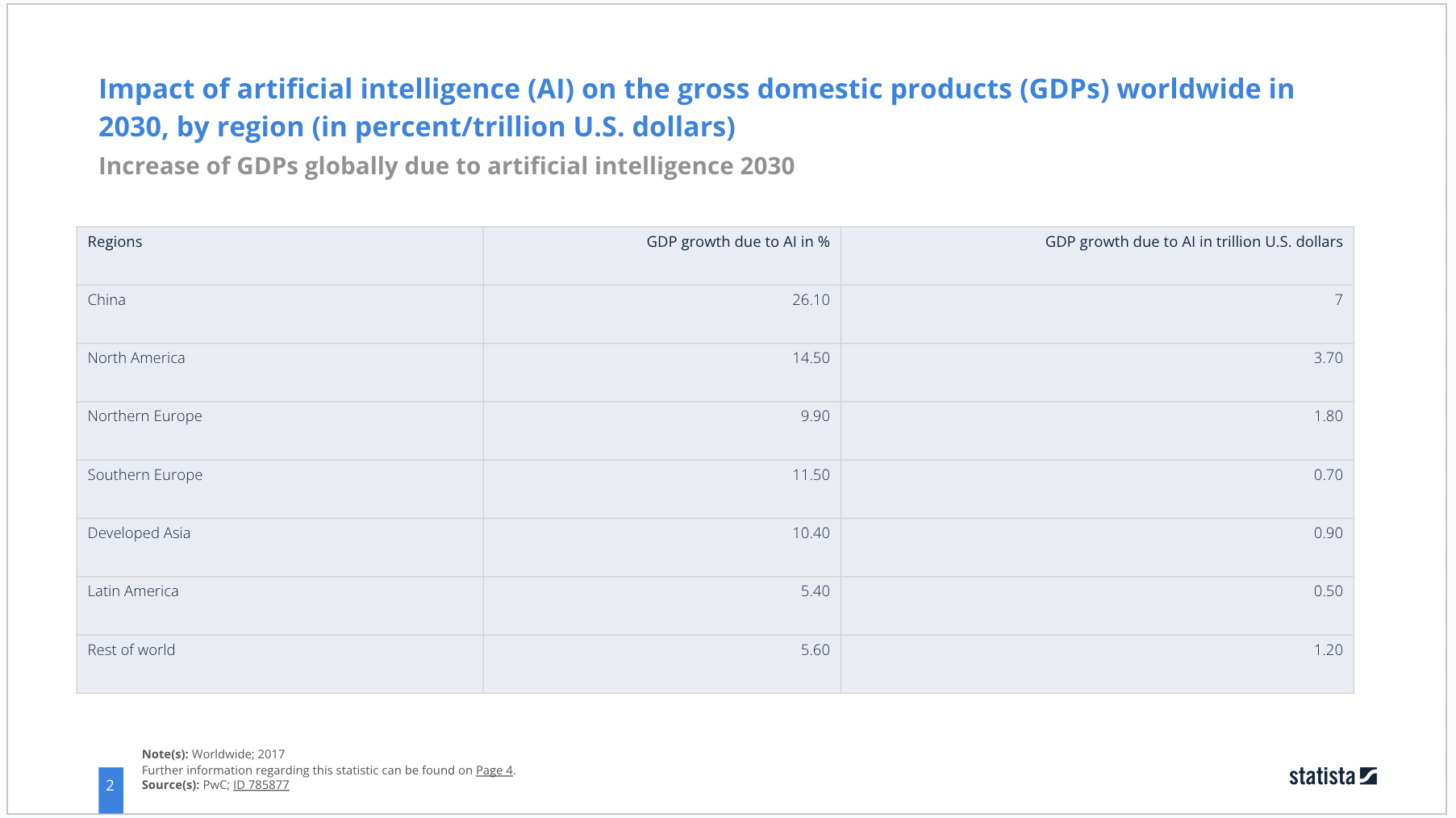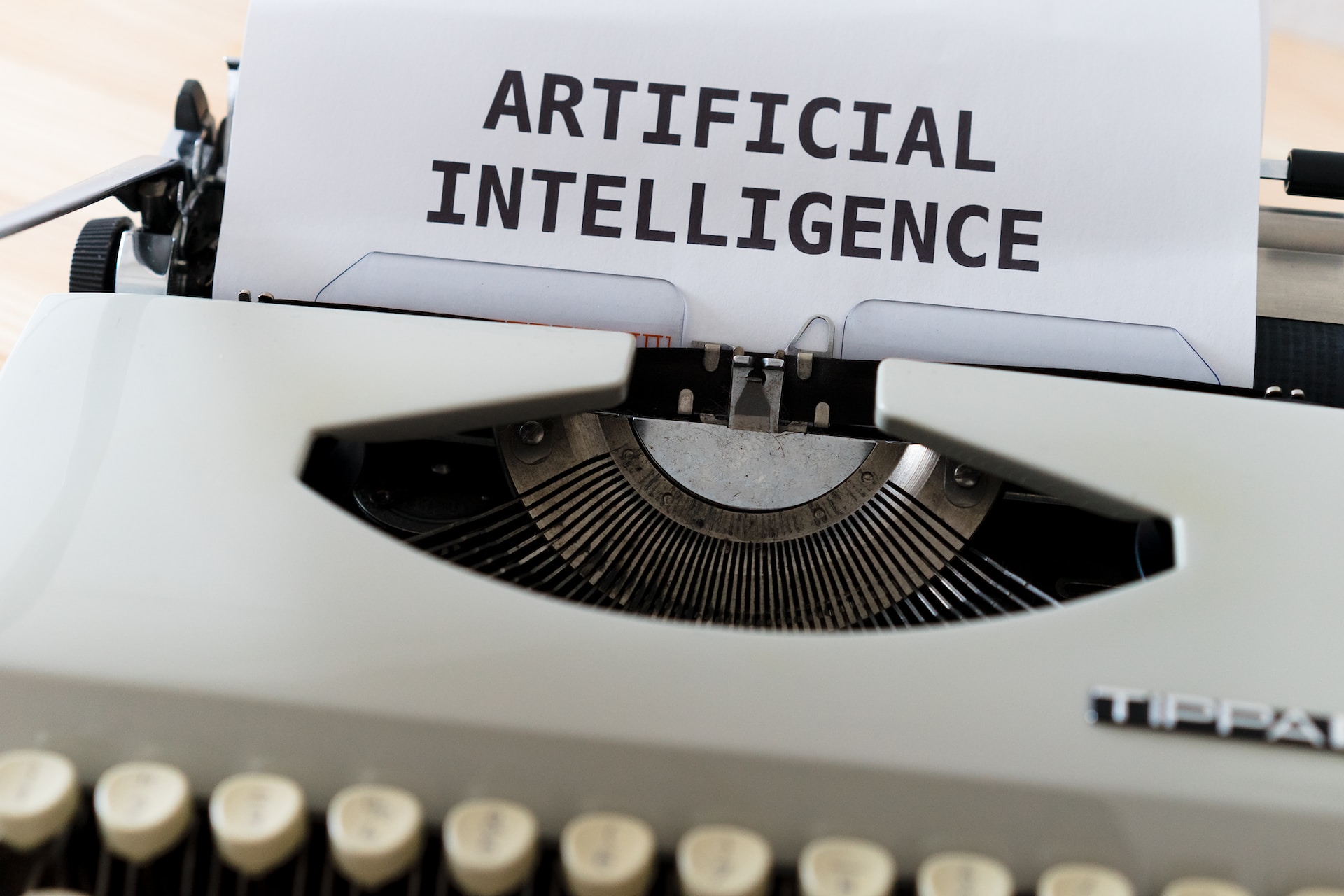Artificial Intelligence (AI) is supercharging global economies. Not only has AI become a force that is transforming industries, but it is also pulling the world economy along with it as it grows.
The Impact of AI on Global Economies
According to a survey conducted by Forbes Advisor, it is approximated that AI will contribute a significant 21% net increase to the United States Gross Domestic Product (GDP) by 2030. On a global scale, the growth is expected to be a whopping 7% which translates to about $7 trillion.
Goldman predicts generative AI could increase global GDP by 7% and lift productivity growth by 1.5 percentage points over a 10-year period. Estimate that two-thirds of US occupations are exposed to some level of automation by AI, of which between a 1/4 and 1/2 of their workload… pic.twitter.com/XTFXHY92rP
— Nathan Lile (@NathanThinks) April 6, 2023
Economic growth is determined by capital, labor, and technology. More precisely, growth is experienced when capital or labor increases, or when they’re used more efficiently. Inventions like the steam engine and the typewriter made all kinds of jobs exponentially more efficient, leading to economic growth.
Another factor that affects the GDP of a region is living standards which are proportional to productivity and the amount of work done per person. When productivity is increased or work is made easier and people produce more output, living standards are often raised leading to economic growth.
How Does AI Fit In The Picture?
Global productivity has slowed down over the recent years especially due to COVID-19, undermining the advancement of living standards. This trend is already reversing with the use of AI by automating some cognitive processes while creating other, more productive duties for humans to carry out.
For example, a company that provides risk modeling services to insurers is using AI-powered software to improve their underwriters’ risk-pricing abilities. This company’s AI can read 22+ million research papers in minutes. How long would it take a human to do that?
This company’s data analysts will become more productive as they concentrate on analysis because their AI handles the reading. They can price risk more effectively and correctly as a result. Even new insurance products can be developed by them to satisfy shifting market needs.
According to a report by the European Union’s Parliament, AI is expected to result in a significant rise in labor productivity by up to 40%. This would generate about $6.6 trillion due to AI’s ability to make workforce-related time management more effective.
With regard to labor, AI-powered technologies will enable humans to create better tools for producing goods and services. Moreover, AI’s capacity is expected to only grow over time because it can learn as it goes. In fact, AI might be the single element that has ever contributed most to economic progress.
Robots and other intelligent devices will also boost capital efficiency by boosting output and decreasing downtime in manufacturing facilities. They will also be employed for hazardous or repetitive activities as they are more ideal and they offset the danger from humans.
One clear example of this phenomenon is found in Wisconsin factories, where employees coexist peacefully with machines. This is a fantastic illustration of how AI is promoting manufacturing progress. Intelligent machines stand in for humans when they are unable or unwilling to do the work, increasing productivity overall.
AI Benefits China and North America The Most
GDP is also improved by an improvement to products, which based on a PWC analysis will account for 45% of all economic gains by 2030, hence boosting consumer demand. This is due to the fact that when AI develops, product variety will expand along with personalization, allure, and cost.
At the forefront of this economic revolution is China which is the country with the highest use of AI, with 58% of businesses using it and 30% exploring integration. In comparison, the United States has a lower adoption rate, with 25% of companies using AI and 43% exploring its potential applications.

As a result, the Asian giant’s GDP is predicted to increase by 26% by 2030 followed by North America with a 14-21% GDP increase during the same period (depending on the estimate). Together, the two regions will account for $10.7 trillion, or over 70% of the global economic impact caused by AI.
Related Articles
- Best AI Essay Writer
- ChatGPT’s New Text Features and Price Drop May Ramp Its Rate of Adoption to Lightspeed
- Survey Shows Only 20% of Americans are Likely to Use an AI Financial Advisor
What's the Best Crypto to Buy Now?
- B2C Listed the Top Rated Cryptocurrencies for 2023
- Get Early Access to Presales & Private Sales
- KYC Verified & Audited, Public Teams
- Most Voted for Tokens on CoinSniper
- Upcoming Listings on Exchanges, NFT Drops

